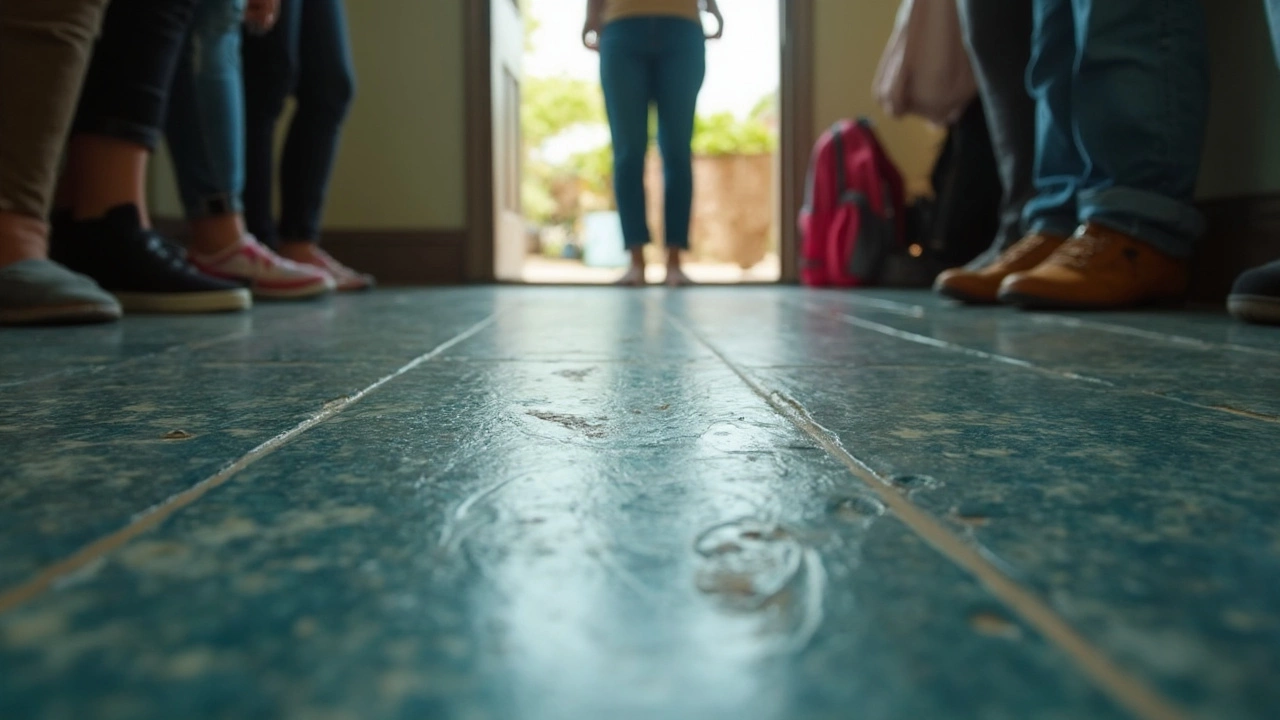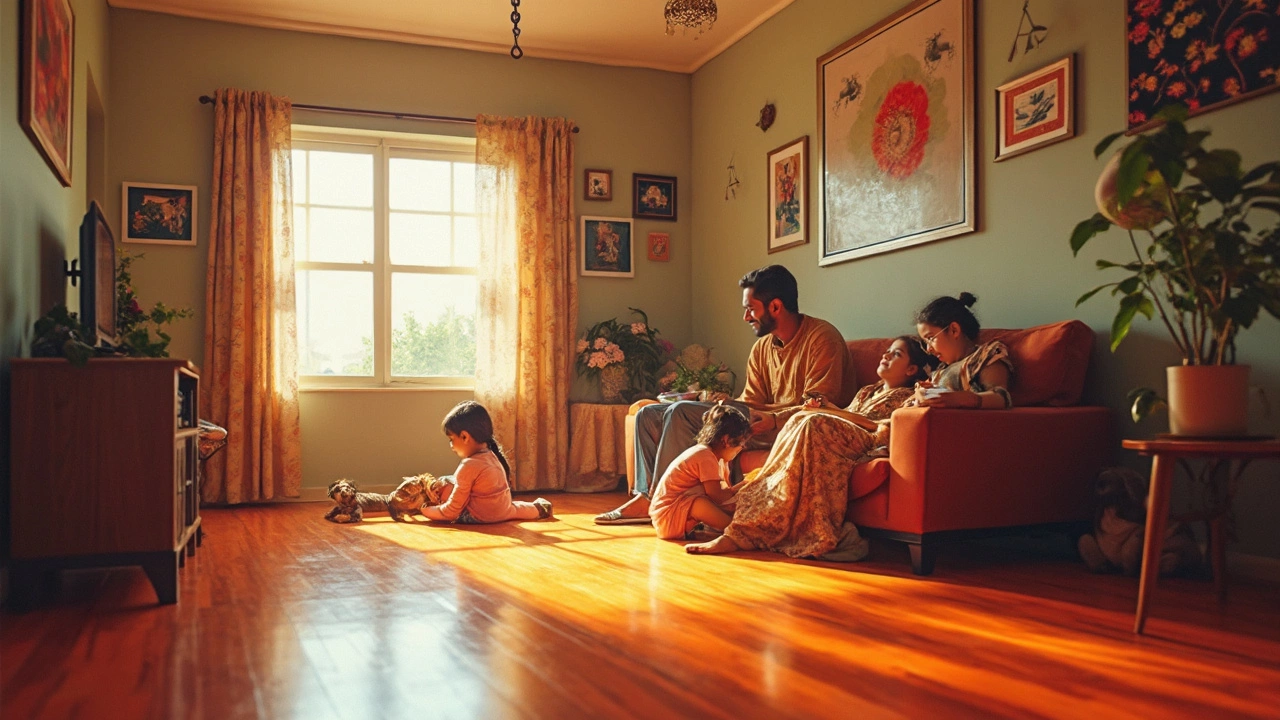So you’re staring at your floors, wondering if the vinyl you picked was really built to last. Here’s the deal—vinyl flooring can stick around for anywhere from 10 to over 20 years, but it’s not just about flipping a calendar. It all comes down to traffic, cleaning habits, and the quality of the vinyl you picked in the first place.
People love vinyl because it laughs in the face of clumsy shoes, muddy paws, and dropped keys. That said, not all vinyl is the same. The thick, luxury stuff? It’ll usually outlast the thinner, bargain-bin versions that roll up at the corners after a few years. The secret sauce isn’t just what you buy, though—it’s how you treat it that really counts. Think about how often you clean, whether you keep it dry, and if you steer clear of those super harsh cleaning chemicals that can slowly eat away at the surface.
- How Long Can Vinyl Flooring Last?
- What Makes Vinyl Flooring Wear Out?
- Signs Your Vinyl Floors Need Replacing
- How to Make Vinyl Floors Last Longer
How Long Can Vinyl Flooring Last?
On average, vinyl flooring stays looking good anywhere from 10 to 20 years. If you go for premium stuff like luxury vinyl plank (LVP) or luxury vinyl tile (LVT), 20 years isn't a stretch—sometimes it even lasts longer in a quiet household with decent upkeep. Standard sheet vinyl and entry-level planks usually tap out closer to the 10-year mark, especially if they take a daily beating.
The type of room really matters. Kitchens, hallways, and entryways—these busy spots wear out vinyl fastest. Bedrooms or less-used offices? The floor practically chills, so you might squeeze a few more years out before seeing the classic fade or scratch marks.
Here’s a quick breakdown of what affects that lifespan the most:
- Quality: Higher-priced vinyl comes with thicker wear layers and tougher finishes. Cheap vinyl is usually thinner and less forgiving against drops or dragging furniture.
- Installation: A pro job helps a ton. Gaps or bubbles from a DIY attempt tend to shorten the floor’s life.
- Traffic: More feet, faster wear. A big family or pets? Expect less time before you see scuffs and dents.
- Care and cleaning: Regular sweeping and gentle cleaning help. Letting dirt build up or using strong chemicals? The floor’s lifespan takes a hit.
Some brands sell lifetime warranties for home use, but read the fine print. These often cover defects, not normal wear or owners dragging a couch across the kitchen. Be realistic about what your home throws at your floor—that’s your best clue to how long vinyl will stick around.
What Makes Vinyl Flooring Wear Out?
Vinyl flooring's lifespan doesn’t come down to guesswork—there are a handful of real-life things that chip away at how long your floors keep looking new. First, traffic is the biggest culprit. The more feet shuffling, running, and sliding over the surface, the faster it starts losing its shine. Kitchens, hallways, and entryways usually show wear way quicker than a spare bedroom that barely gets visited.
Moisture is another big deal. Even though some vinyl flooring is waterproof on top, water can sneak underneath through bad seams or cracks, causing warping or loosened edges. If you mop with too much water or have leaks that never get fixed, expect your vinyl to break down much faster.
Another factor is sunlight. Those big, sun-soaked rooms you love? Constant UV exposure will fade patterns and colors over the years. And don’t forget—harsh cleaners, especially the bleach or ammonia-based ones, wear down the protective layer and leave the floor more open to scuffs and scratches. Dragging heavy furniture or not using felt pads is asking for scratches, dents, and tears.
- vinyl flooring: Thin or low-quality vinyl can show wear in under 7 years, while premium types can hit the two-decade mark if you’re careful.
- Sharp grit, dirt, and tiny stones tracked in from outside can act like sandpaper.
- Pet claws can gouge the surface if you don't keep them trimmed.
- Heavy objects left in one spot too long can leave permanent dents.
If you’re a numbers person, check out this quick breakdown:
| Wear Factor | Impact on Lifespan |
|---|---|
| Heavy Foot Traffic | -3 to 5 years |
| Exposure to Water | -2 to 4 years |
| Direct Sunlight | -1 to 3 years |
| Harsh Cleaning Chemicals | -1 to 2 years |
Long story short, most damage happens from what you do (or don’t do) daily. Smart habits can add years to your vinyl, while a few careless moves can shave them right off.

Signs Your Vinyl Floors Need Replacing
Sometimes, vinyl floors give you clear hints that they’re basically done. It’s not always dramatic, though—more like slow, annoying changes you can’t unsee. Catching these signs early can help you plan before you’re left with a patchy-looking floor you just want to cover up.
- Cracks and Tears: If you spot cracks, deep scratches, or actual tears, it’s not something that’s going to heal itself. No amount of scrubbing or covering up with a rug will fix these. Once floors hit this stage, water and dirt can easily get underneath, making things even worse.
- Bubbling or Warping: If any spot starts to look warped, puffy, or bubbles up (especially in kitchens or bathrooms), it’s a big red flag, often from moisture. That usually can’t be reversed without a replacement.
- Stains That Won’t Budge: Spills happen, but if you scrub and the stain still sticks around—especially from things like coffee, red wine, or nail polish—the top layer is probably worn out. That thin protective layer takes a beating over the years, and once it’s gone, stains just settle in for good.
- Fading: Sun is the quiet enemy of vinyl. If your once-grey or wood-look floor is now uneven and washed out in patches, UV rays have done their thing. A room with a lot of direct sunlight will usually show fading on vinyl after 8 to 10 years.
- Edges Curling or Peeling: If the corners or seams are lifting, your floors aren’t just looking tired—they’re also collecting dirt, moisture, and grime underneath. You might see this happen around entryways more than anywhere else.
Need some real-world numbers? Check this out—a quick table on common vinyl flooring issues and when they tend to pop up:
| Problem | Average Years Until It Shows Up |
|---|---|
| Fading | 8-12 |
| Cracking/Tearing | 12-18 |
| Bubbling/Peeling | 10-15 |
| Permanent Stains | 10-15 |
So if your vinyl flooring is hitting these milestones—or the floors just look tired no matter how much you clean—replacing them might actually save you frustration (and embarrassment) in the long run. No shame in wanting a fresh start under your feet.
How to Make Vinyl Floors Last Longer
If you want your vinyl flooring to spill its secrets to long life, you’ll need more than occasional sweeping. It’s all about day-to-day habits and a couple of no-fail rules that keep yours looking sharp year after year.
The top enemy for vinyl is grit. Dirt and sand dragged in on shoes acts like sandpaper, scratching up the surface over time. Make it a habit to sweep or vacuum with a soft brush attachment at least a couple of times a week, especially if you’ve got kids, pets, or a love of backyard cookouts. Then mop with warm water and a gentle cleaner. Skip the abrasive pads and harsh bleach – they weaken the protective top layer fast.
- Place doormats at all entrances – the more the better. Mats trap dirt before it even hits your floors.
- Stick felt pads under chair and table legs. Every time you pull a chair out, you’re risking a scratch.
- Keep your floors dry. Standing water sneaks into seams and edges, causing bubbling and peeling.
- Avoid high heels and sports cleats indoors—they put pressure right where vinyl is weakest.
- Don’t drag heavy furniture or appliances. If you have to move something big, put it on a moving blanket or furniture sliders.
When it comes to cleaners, it’s easy to overdo it. Stick to pH-neutral products made for vinyl or even just a bit of dish soap with warm water. Steam mops are a bad idea—too much heat can warp the floor over time.
Real talk: pets and kids living their best lives? You’ll need extra grit control. But people who skip shoes inside, use mats, and pair gentle cleaners with quick dry-ups after spills, get floors that hold up far longer.
| Care Level | Average Lifespan |
|---|---|
| Regular cleaning, mats, gentle cleaners | 18–22 years |
| Minimal cleaning, harsh chemicals, no mats | 8–12 years |
If you ever see a seam lifting or a small tear, fix it quick so it doesn’t turn into a bigger headache. Replacement tiles and planks are easy to find in most big box stores or online. Taking care of little things early stretches out years in your floor’s favor.
